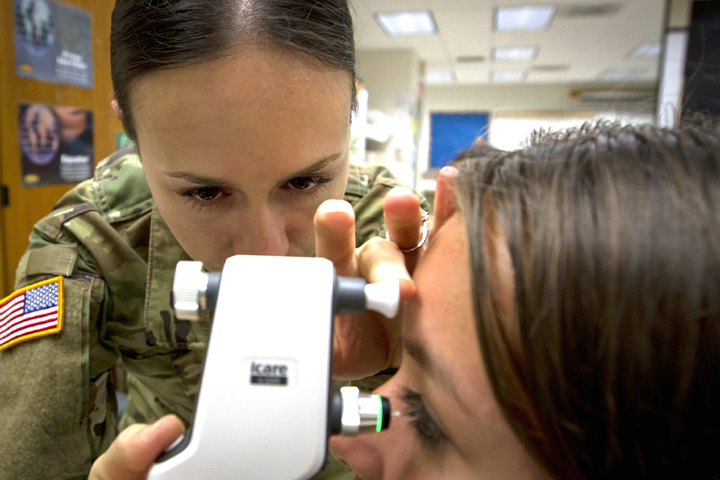11 April 2018
Study Update: Developing Treatments for Blast-Related Vision Loss
Developing Treatments for Blast-Related Vision Loss
“I can tell you, from my perspective, the signature weapon of this conflict is blast, and blast is a potentially devastating weapon which can burn, can result in amputation of limbs,
that can result in loss of eyesight and hearing, that can damage brains and obviously, as we’re all concerned, can lead, because of the context of the conflict for the combatant, to many post-traumatic stress results.”
− LTG Eric Schoomaker, Commander, USAMEDCOM, April 17, 2008
Blast injury from detonation of improvised explosive devices (IEDs) has emerged as the most frequent battlefield injury and greatest threat to warfighters in the current operations of Iraq and Afghanistan. Standard penetrating and blunt trauma to the body is the most common injury among survivors, and up to 10% of those afflicted have significant eye injuries. Blastrelated eye injuries often occur without any obvious outward signs of trauma, making them difficult to recognize, diagnose, and treat.
A leading cause of vision loss in the warfighter is the result of exposure to blast shock waves and the subsequent non-penetrating traumatic injuries to the eyes and brain visual processing centers. A substantial portion of blast-related closed-eye injuries, up to 26%, involve tears, detachments, and hemorrhaging of the retinas. Based on human clinical studies and recent animal studies, it is of high probability that exposure to even moderate blast waves can lead to neuronal cell death in the retina and brain visual processing centers that is severe enough to cause partial or full blindness.
Permanent loss of vision is a lifelong disability that has a profound impact on the warfighter’s quality of life. In 2012, Dr. James DeMar, a Geneva researcher at the Walter Reed Army Institute of Research (WRAIR), began a research study to address the urgent need for new drug therapies to stop the progression of cell death in the retina and brain as a result of exposure to blast waves. This scenario is especially of concern when eye and brain blast injuries suffered by military personnel are not immediately attended to in the field, continuing the inflammation process and damage to the eye for an extended period of time. Dr. DeMar is specifically interested in studying novel drugs derived from omega-3 polyunsaturated fatty acids, which are known to be potent anti-inflammatory agents.
The frequency of blast exposure and the resulting blast injuries from recent combat operations have allowed Geneva researchers to draw a more accurate clinical picture of the impact of blasts. The results of blast injury research have and will continue to be instrumental in improving the safety of our warfighters during combat, the quality of life for veterans, and even the well-being of civilians at job sites. This important research conducted by Geneva teams will continue to add to the growing base of knowledge in the treatment and prevention of injuries related to
blast exposure.


